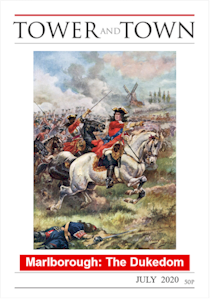

Tower and Town, July 2020 (view the full edition) (view the full edition)The Pitchfork (Monmouth's) Rebellion And Service Under James IIThe seventeenth century was a period of difficult choices. The Civil War, its approach and its subsequent events forced the servants of the state, even more than ordinary people, to take sides. John Churchill was one such, initially a soldier loyal to the king. When Charles II (the Merry Monarch and friend of Nell Gwyne) died, the crown passed to his brother James (the Duke of York) in February 1685. As he was avowedly Roman Catholic, like his wife, this was seen almost universally in England as unacceptable. But as James II he was the lawful king. James Scott, the Duke of Monmouth, was the oldest illegitimate son of Charles II and, like his sister Mary, a Protestant. He claimed he was the rightful king. He was living in Holland, but sailed to Lyme Regis in the early summer and set about raising an army of non-conformists, artisans and farm workers (hence the 'Pitchfork' name) in the west country where he was popular. With occasional skirmishes they marched north through Dorset and Somerset hoping to take Bristol, but were met by King James' army at Sedgemoor on the Somerset levels close to Bridgwater. King James' army was commanded by the Earl of Feversham with Colonel John Churchill as second in command and numbered some 3,000. The rebels, untrained and ill equipped as they were, were some 4,000. Monmouth attempted a night attack - a difficult task even for experienced troops - crossing the deep drainage ditches (rhynes). One of these crossings startled an army patrol, a shot was fired and surprise was lost. The battle was soon over, Monmouth fled to the coast but was captured and executed within a fortnight. His amateur soldiers were killed on the moor, or, if they fled, hanged at the roadside or tried in Judge Jeffries' Bloody Assizes. John Churchill, however, fulfilled his duties admirably and was ennobled as Baron Sandridge in recognition. (That Sandridge was in Cambridgeshire and nothing to do with the Devizes egg farm). Shortly afterwards, unsettled by James' increasing Catholicism he joined the conspirators communicating with (Protestant) William of Orange, who was married to (Protestant) Mary, the daughter of Charles II. Alexander Kirk-Wilson |